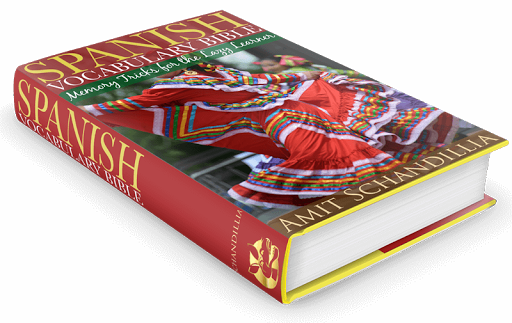Why start with present indicative?
Grammatical labels aside, present is the time around which which most of our day-to-day conversations revolve. In any language. Not only is it the most heavily used tense, it’s also an extremely versatile one to boot. Apart from the present, you could use this tense to express events well in the future or even the past. Let’s see some examples:
- I want to buy a new cell phone (the plain vanilla present form)
- We are visiting Cancún this summer (future tense expressed using the present tense)
- The train leaves in another five minutes (again, a future event expressed using the present tense)
- By the time the movie ends, the hero is revealed to be the bad guy (a past event expressed using the present tense)
- He struggles for a few minutes and then he is dead (a past event being recounted using the present tense)
Thus, we see how versatile this tense can be. Another benefit of mastering the conjugations for this tense, specific to Spanish, is that many other tenses conjugate in patterns similar to that of the present tense to varying extent. One notable example is the Spanish imperfect tense which closely follows the pattern of present tense conjugations. All these reasons make the present indicative tense the best candidate to start with when you are starting out with Spanish tenses.
The conjugation
The present indicative conjugation is perhaps the simplest of all and my experience shows that people find it quite easy to memorize this tense in comparison to the others such as the preterit or the imperfect. Technically, each of the three verb classes (-ar, -er, and -ir) conjugate differently but the difference is extremely small. Learning just the -ar conjugations, in most cases, automatically takes care of the other two without any real effort.
Here’s how -ar verbs conjugate using cantar (to sing) for illustration:
-o (canto I sing)
-as (cantas you sing)
-a (cantas he/she/it sings)
-amos (cantamos we sing)
-an (cantan they sing)
Using beber (to drink) as example, here’s how the -er verbs conjugate:
-o (bebo I drink)
-es (bebes you drink)
-e (bebe he/she/it drinks)
-emos (bebemos we drink)
-en (beben they drink)
The -ir verbs conjugate in exactly the same way as above with the only exception being the “we” form where -emos becomes -imos, e.g., vivir (to live) becomes vivimos (we live). What a relief!
Now for the trick
 |
| Pedro Almodóvar Photo credit: Roberto Gordo Saez licensed CC BY 3.0 |
Before we get to the magic sentence, do consider the -ar conjugation once again; note the pattern. It all boils down to a sequence of endings which you need to remember in exactly the right order: -o, -as, -a, -amos, and -an. This is what the mnemonic is going to facilitate:
Pedro is a famous man
Now, it doesn’t matter if you even know any famous Pedros out there; though there are more than a few indeed. You have one Pedro on the FC Barcelona team for the soccer fans in you and then you have a Pedro Almodóvar for the Spanish movie buffs. And there are many, many more.
Anyways, regardless of whether you know any famous Pedro, it’s not too hard to imagine someone who goes by the name Pedro and happens to be famous. So, what’s this Pedro got to do with my present tense -ar conjugation? Read the sentence once again and notice the portions in bold. List them out in exactly the order they appear in. You’ll easily see how easily they rhyme with the five verb endings of our conjugations!
Pedro – -o
is – -as
a – -a
famous – -amos
man – -an
Is life any bit easier now? As for the -er verbs, all you need to do is replace the a’s from the conjugated -ar endings with “e”. Thus, -as becomes -es, -a becomes -e, -amos becomes -emos, and -an becomes -en. No mnemonic needed for this one. And we have already seen how -ir conjugations follow the same pattern with just one exception.



.png)
Some very sound advice! Here are some great resources for Spanish verb conjugation learning: http://www.succeed-at-spanish.com/spanish-conjugation.html
ReplyDeleteThanks for sharing the link, Emma...it seems like a really interesting idea to learn those pesky conjugations using audio resources. Anything that can be used as a replacement for the traditional repetitive memorization is a welcome resource for us learners! :)
DeleteThanks for sharing the link, Emma...it seems like a really interesting idea to learn those pesky conjugations using audio resources. Anything that can be used as a replacement for the traditional repetitive memorization is a welcome resource for us learners! :)
ReplyDeleteOmg this is awesome. Thanks!
ReplyDeleteThanks Vero, a little creative thinking can go a long way in language learning. Salud :)
ReplyDelete